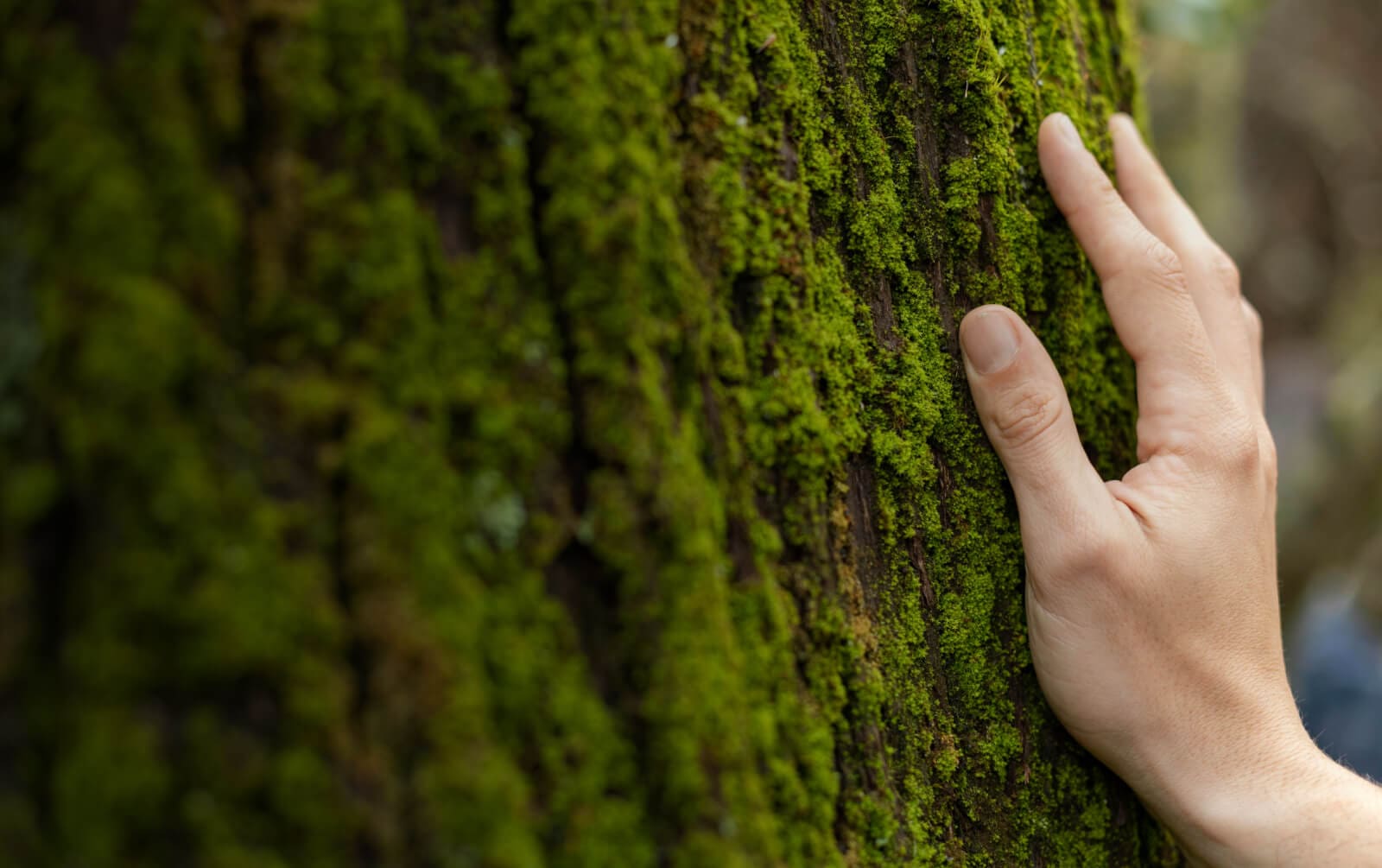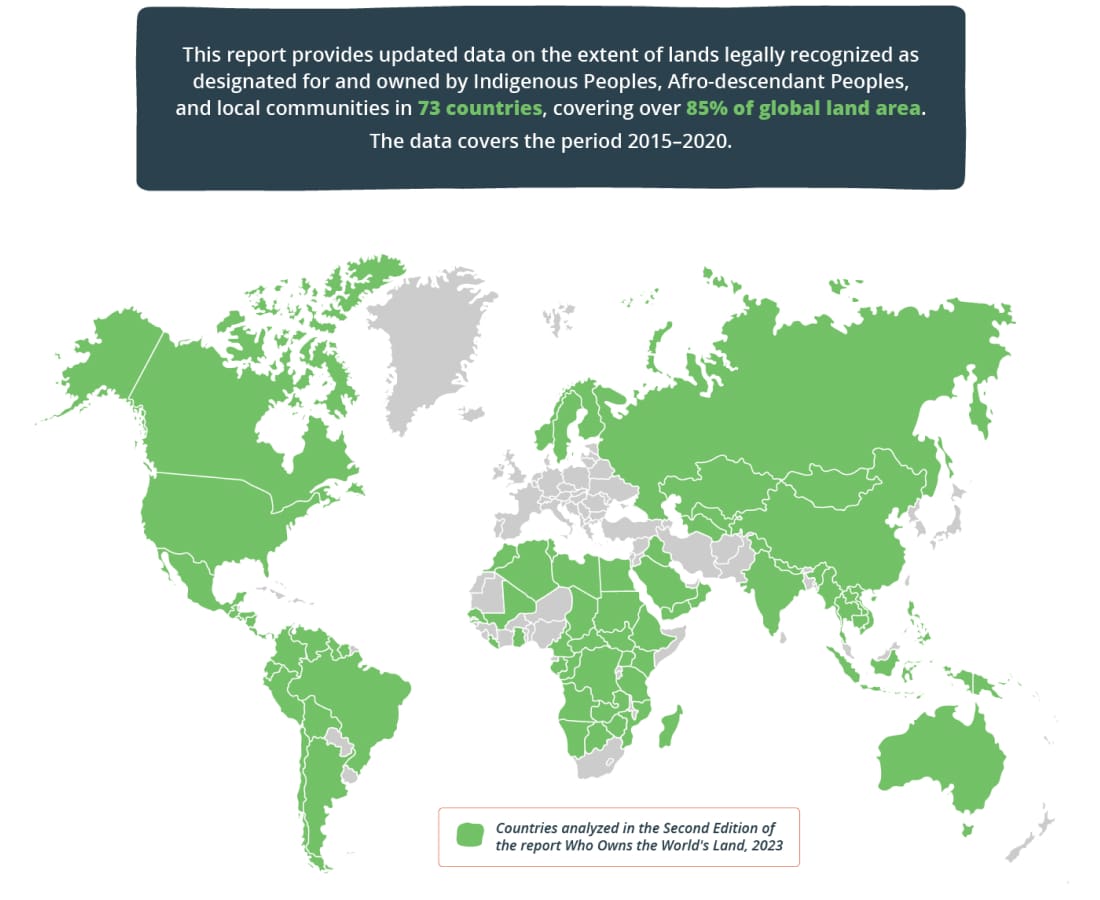
Who Owns the World’s Land?
The Second Edition
By Rights and Resources InitiativeIndigenous Peoples, Afro-descendant Peoples, and local communities comprise up to 2.5 billion of Earth’s population and customarily hold and use at least 50% of its lands. This new report by Rights and Resources Initiative (RRI) analyzes the legal frameworks of 73 countries covering 85% of Earth’s terrestrial area and finds that at least 39 national governments increased the area under Indigenous, Afro-descendant, and local community ownership between 2015-2020, resulting in legal recognition of more than 100 Mha of community lands.
Communities made these gains despite little government or donor assistance, implying that greater investment in their rights could rapidly advance global climate and conservation goals. Full implementation of existing laws has the potential to increase community owned or controlled lands by an additional 260 Mha across the world—an area twice the size of Peru.
DOWNLOAD REPORTWhat's new in this year's report?
A growing body of research directly connects strong Indigenous and community land rights with lower rates of deforestation and forest degradation, making community land rights recognition a viable solution for achieving global climate and conservation goals.
Between 2015 and 2020, Indigenous Peoples, Afro-descendant Peoples, and local communities in Asia, Africa, and Latin America gained legal recognition to over 100 Mha of additional lands and now own more than 11% of the world’s land.
These advancements are attributable to sustained advocacy and engagement by rightsholder and civil society groups that resulted in new legislative developments as well as ongoing implementation with previously existing legal frameworks.

Regional Progress
Home to an estimated 70% of the world’s total Indigenous population, almost 98% of all recognized community-owned land is in China. Without China, the region has the lowest proportion of community-owned land than either Latin America or Sub-Saharan Africa, at only 0.83%.
India and Indonesia in particular saw modest but insufficient gains. While communities’s recognized land area increased eighteenfold against the 2015 baseline in India and sevenfold in Indonesia, the speed and scale of national recognition remains inadequate.
Reported the greatest increase in legal recognition of community land rights, increasing by 12% between 2015 and 2020. However, nearly all these known increases occurred in only two countries: Kenya and Liberia.
The Democratic Republic of the Congo (DRC) is a country to watch, which passed a historic law recognizing the rights of the Indigenous Pygmy Peoples in 2022. In tandem with the Republic of Congo’s new Forestry Code, adopted in 2020, these two countries have an opportunity to accelerate land rights recognition in the Congo Basin in the years to come.
Has long been a regional leader in community land rights recognition. Yet only 21 Mha—less than 1% of land across the 16 countries analyzed in the region—was recognized as being designed for or owned by communities between 2015-2020.
Threats to community lands crystallized in Brazil when former President Jair Bolsonaro, on his second day in office in 2019, cut funding for the country’s Indigenous affairs agency (FUNAI). And, while the new government has pledged to respect Indigenous and community rights, legislators advanced a new Bill earlier this year that could restrict Indigenous Peoples’ control over their territories.
This report serves as both a barometer of the current state of community-based tenure recognition, and as a call to action: Although there has been some progress in the recognition of community land rights since the publication of the first Who Owns the World’s Land?
in 2015, it has not been at a scale or pace sufficient enough to accelerate progress towards greater equity, sustainable development, and poverty eradication.
This should spur action by governments, bilateral and multilateral donors, international organizations, philanthropists, and other stakeholders to accelerate adoption and implementation of tenure reforms that recognize the critical role Indigenous Peoples, Afro-descendant Peoples, and local communities in stewarding the lands where they have lived for generations.


